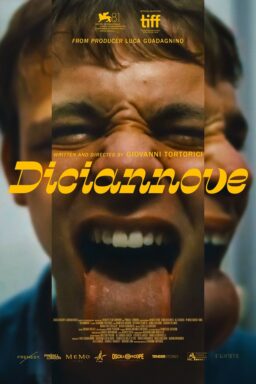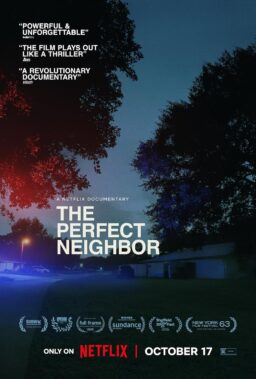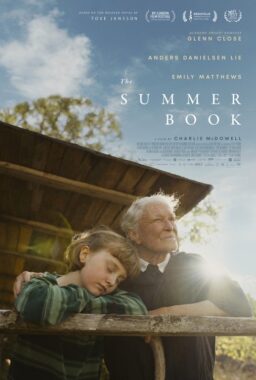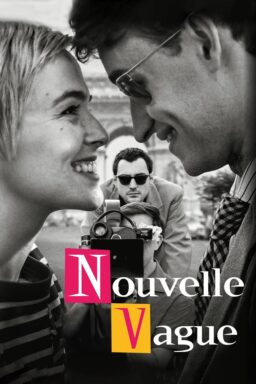Manele Labidi’s debut feature “Arab Blues,” a comedy with little bite and less imagination, coasts on the offhanded charm and sincerity of its star Golshifteh Farahani. Farahani plays Selma, a Parisian psychotherapist who returns to her hometown of Tunis to open up a practice on the roof of her extended family’s apartment building. Her anchoring presence, one informed by a believable sense of existential isolation, goes a long way to grounding what’s otherwise a too-cute, well-tread examination of clashing cultures that goes for the easiest joke at every opportunity.
Naturally, the Tunisian community, conditioned to bottle up their issues rather than coping with them, responds with skepticism to Selma’s practice, but as anyone can surely guess, the people take to talk therapy like a horse to water. Soon, Selma helps out everyone in town: a depressed imam, a salon owner with mother issues, a paranoid ex-con, and a man struggling with feelings of gender dysphoria, the latter of which evolves into bad, possibly transphobic schtick. She later addresses the deep dysfunction within her own extended family—an alcoholic uncle, a dissatisfied aunt, a rebellious cousin, all of whom can’t understand why she left a cosmopolitan city to return to the barren desert. Meanwhile, a handsome cop (Majd Mastoura) alternatively flirts with Selma and threatens to shut down her practice if she doesn’t file the proper bureaucratic paperwork.
The therapy material leans too heavily on obvious, saccharine insights, and the cultural humor, most of which trades in gentle stereotyping and predictable archetypes, feels tailor-made for what’s left of the stagnant arthouse crowd. But Farahani does a lot by playing the straight woman in an ensemble directed to play to the cheap seats. Her character’s inevitable, subtext-explaining monologue aside, Farahani invests Selma with a determination that comes from a lifetime of being professionally and personally unfulfilled, not to mention living down a complicated family history. She wants to help her people, even if she has to drag them, along with culture and the government, kicking and screaming into her office. Props to her: it’s genuinely difficult to render that motivation credible while surrounded by cartoons.

“White Lie,” about a student who struggles to keep her fake cancer diagnosis a secret, mostly succeeds because it abstains from reducing its protagonist to a simple psychology. Written and directed by Calvin Thomas and Yonah Lewis, the film doesn’t tip its hand about why exactly Katie (Kacey Rohl) wants to defraud the Ontario public, or better still, why she wouldn’t give up after so many close calls. She has a Kickstarter campaign, but she can neither access nor be seen enriching herself with those funds in the short term. Plus, any cash donations she receives from concerned peers goes to maintaining the ruse. (Apparently, it costs time and money to procure illegal medications, forge medical records, and buy people’s silence.) Katie doesn’t have a goal for the money aside from a vague plan about going to Seattle, something that could be achieved without going to such emotionally manipulative lengths. She doesn’t even relish the attention, mostly keeping to herself and meekly accepting gratitude. It’s as if she’s doing it because she’s convinced herself it’s real and it’s working and she can’t stop now.
Thomas and Lewis include some implied social commentary in “White Lie” about the ways in which people’s curatorial, brand-conscious impulses on social media can be used to perpetrate illusions small and large. There’s a sliding scale between selectively posting photos on Instagram to convey the image of a good vacation and using those same tools to create a benefit for a person with a fake disease. But “White Lie” is least interesting when it leans into that angle, which happens mostly towards the very end. It works much better as a psychological thriller with the character portraiture filtered through backdoor dealing and the danger of being discovered. Thomas and Lewis mine great tension from watching Rohl improvise her way through doctor’s offices, administrative meetings, and interpersonal relationships, all with the hammer waiting to fall just out of sight. She’s a sociopathic-grade liar with the organizational skills of an overworked undergrad.
Rohl necessarily carries the film on her shoulders, convincing everyone along with the audience of her plight through crocodile tears and pleas to rationality. It’s interesting to watch her survey a situation and adjust facial expressions and tone of voice accordingly. She has the visage of a frightened kid staring down the barrel of a fatal disease but the emotional framework of a practiced abuser. The only person she can’t fool is her father (Martin Donovan, a welcome cameo), who very quickly susses out her daughter’s scam because she pulled the same con before, albeit on a much smaller scale. It’s very interesting indeed to watch how Rohl plays the uncomfortable moments with her dad in person and on the phone. The mask slips occasionally, and you see the real Katie, even if it’s only for a few seconds. Like many other scammers of this particular era, she’s pretty much what you expect, which isn’t all that impressive.

I had not seen any of Angela Schanelec’s work prior to viewing her tenth feature “I Was at Home, But…” A friend told me two things about her: 1) she’s considered one of the more austere stylists to emerge from the Berlin School of filmmaking, which has produced breakthroughs like Christian Petzold and Maren Ade, and 2) her films feature cryptic plots that eschew traditional narrative signifiers. The programmer who introduced “I Was at Home, But…” describe it as a “puzzle film,” and Schanelec cautioned the audience not to worry about connecting all the dots. The goal, she says, was to think intuitively.
About halfway through the film, a few threads emerge from the thicket of Bresson-inspired imagery: Astrid (Maren Eggert) struggles with the pains of daily life as she grieves her late husband and adjusts to the sudden reappearance of Phillip (Jakob Lasalle), her 13-year-old son; multiple scenes featuring an oft-stilted classroom production of “Hamlet” starring young schoolchildren, including Phillip, which functions as an allusive chorus of sorts; and lastly, a minor subplot involving one of Phillip’s teachers (Franz Rogowski) who tries to save a doomed relationship. Schanelec doesn’t impose a linear narrative, so events occur out of order and only crystallize when settings, characters, and stray lines of dialogue recur. There are also scenes of nature that serve as bookends: a dog chases a rabbit; a donkey surveys his territory while the dog eats his prey; the dog sleeps next to the donkey.
It’s either a fool’s errand or beyond my grasp to definitively state how these threads correspond with each other or what they’re supposed to signify. Schanelec relegates meaning to lateral echoes of comparable situations or trauma—absent fathers, errant alienation, strained relationships. I suspect piercing together a coherent narrative is entirely beside the point; it’s not a puzzle, but rather an inkblot. Obviously, this modus operandi isn’t everyone’s cup of tea. A friend who also attended the screening admitted to not getting the film and expressed frustration with Schanelec’s pre-show advice. The next day, I overheard a person venting about how much he loathed it to his colleague.
I mostly appreciated “I Was at Home, But…” for its many formal pleasures. Schanelec’s patient approach to shot duration charges individual scenes, providing them with unexpected depth through the nature of studied observation. She interrogates Bressonian modes of acting through the film’s various performances, culminating in a lengthy monologue on the subject that’s a defense of the theory delivered in an ideologically oppositional manner. (For more on that particular scene, Schanelec’s relationship with Bresson, and more, I invite you to read Vadim Rizov’s thorough write-up of the film at Filmmaker Magazine.) The film’s syntactical structure frequently excites because the aesthetic framework engages the eye and it allows for surprising ruptures to occur. These include scenes of outright comedy, including an amusing runner involving a bicycle sale, and a sudden flashback to Astrid and her two children dancing in front of a mirror, set to M. Ward’s acoustic cover of “Let’s Dance.” Even if the destination isn’t always, the journey, however challenging, can still be edifying.












